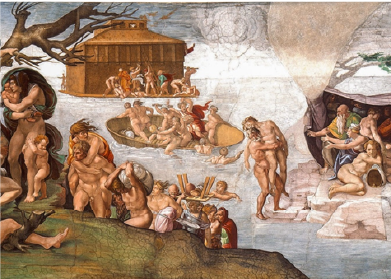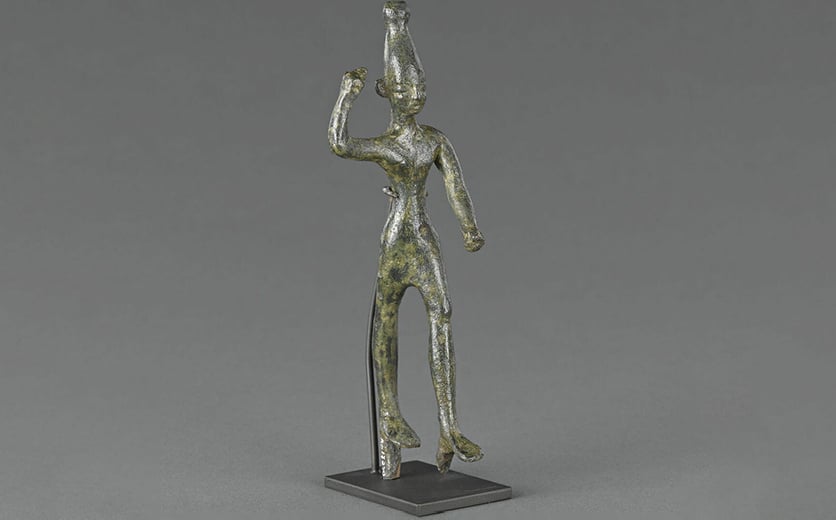Atrahasis is the modern name of the epic known in Mesopotamia by its opening words, inuma ilu awilum, “When the gods were (like) Man.” As its name suggests, the epic imagines a proximity between gods and humans, envisioning a time when a distinction between these was not entirely clear-cut. It offers a complex but clear explanation of humanity’s origins and purpose, relating, among other things, human birth and death to the mythical origins of the first human and near extinction of the entire race.
The epic was composed and first circulated in the Old Babylonian period (ca. 2000–1600 BCE). Running around 1,245 lines, it is the longest Akkadian mythological text from this period. The story builds on known contemporary or older myths, possibly including a legend of a mythical sage, Watar-hasis (“Most Wise”), the name of Atrahasis’s human hero. These traditions, however, are reshaped and integrated into a much more elaborate narrative with much in it that is new, reflecting a turning point in Mesopotamian history and thought. A later version from the first millennium BCE found in many copies from different cities demonstrates the continued interest in the epic and its part in Mesopotamia’s canon.
Why and how were human beings made in Mesopotamia?
According to the epic’s story, aeons ago a group of minor gods grew weary of the drudgery imposed on them by Enlil, head of Mesopotamia’s pantheon. A rebellion by these lesser gods disturbs Enlil’s sleep and alarms the chief deities, who, however, recognize the underlying problem. One, Enki (in Gilgamesh called Ea), proposes a solution: a new species—human beings—is to be created to replace the gods’ toil. A part of the plan calls for blood from the corpse of the rebellion’s ringleader to be mixed in with clay to form the first human. The epic makes connections among words to develop the idea. Accordingly, the divine spirit (etemmu) that will inhere in humans and account for their reason (temu) owes to the divine blood (damu) introduced into the first human and recalls the gods’ rebellious plan (temu). Given their view of language as fully planned and not random, such occasions of apparent wordplay in fact provided the ancient Mesopotamians with what they considered to be scientific proof of the workings of the world, natural and supernatural.
In due course, human reproduction and hubbub again disturbs Enlil, echoing the earlier crisis. He decides to wipe out the human race, ultimately by an earth-shattering flood. The uniquely clever Enki, however, reveals the plan to his human counterpart, Atrahasis, instructing him on how to survive the flood: he is to build an ark and remain on it throughout, loaded with family, animals, necessities, and more. Though Atrahasis’s survival infuriates Enlil, the gods, recognizing their need of humans, agree on establishing natural and cultural limits on humanity so as to control future overpopulation and to contain disorder.
How do humanity’s creation and near destruction compare to the same topics in the Bible?
The story of Atrahasis influenced later literatures in the ancient world. These include the standard version of Gilgamesh, which took from it the flood story, and Gen 1–11, which adapted from it different ideas in the stories about the garden of Eden, Cain and Abel, and the run-up to the flood. Thus, for example, the original plan for Adam to work and look after the garden of Eden reflects the purpose of the lower gods’ creation in Atrahasis. So, too, in all likelihood, is the attempt to establish a relation between humans and the earth via the words for earth (ʾadamah), Adam (ʾadam), and blood (dam), which was likely inspired by Atrahasis’s use of words to connect divine spirit, reason, and divine blood in the origin of the first human. And God’s early command in Genesis for humans to be fruitful and multiply likely represents a critique of the opposite idea in Atrahasis, with the gods there dismayed by and spiteful of human reproduction and liveliness.





